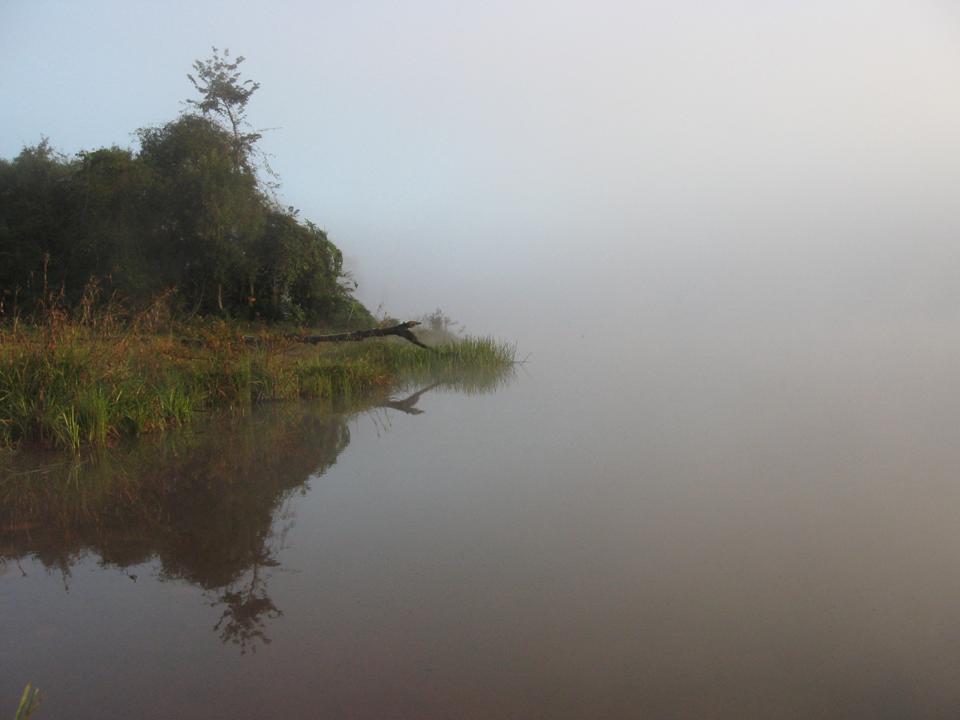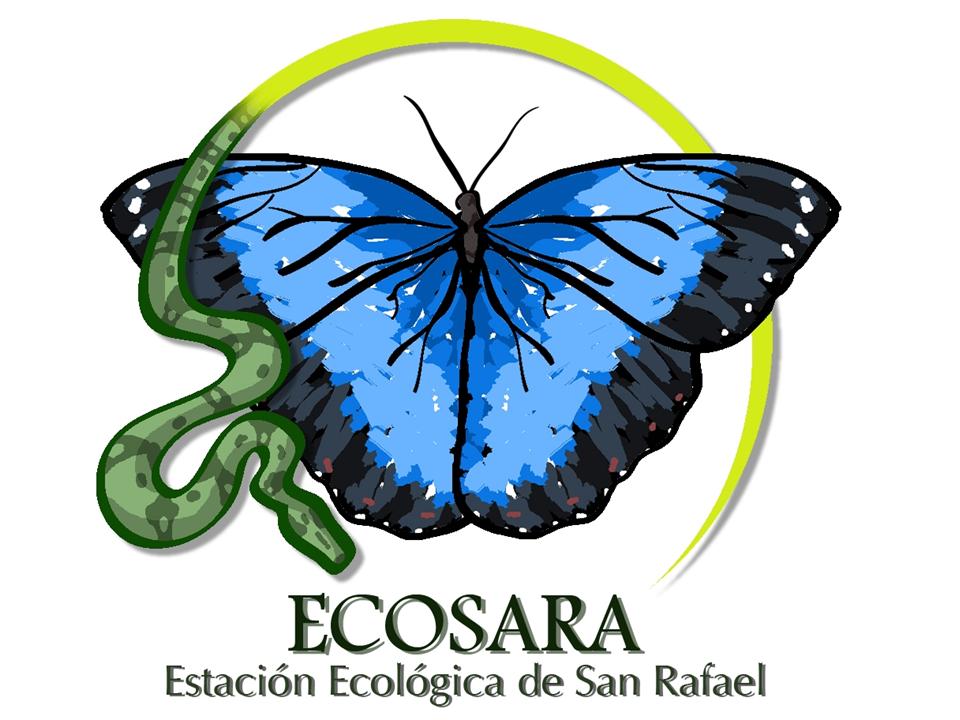
ECOSARA
CLIMATE AT SAN RAFAEL
The climate at San Rafael is subtropical. There are no clearly defined seasons and little variation in day length throughout the year. There are between 10 and 12 hours of daylight throughout the year.
TEMPERATURE
In general the hottest months are December through February (mean 23.8C) and the coldest May through August (mean 17C). Temperatures occasionally pass the 40C mark during the hottest times of year when humidity may reach 100%. Year-round sunny days are the norm, even when it is cold. In winter, day-time temperatures are often pleasantly warm, but may dip considerably at night. Overnight frosts are unusual but annual.
Designed by Paul Smith 2007. This website is copyrighted by law.
Material contained herewith may not be used without the prior written permission of FAUNA Paraguay, Pro Cosara and ECOSARA.
Photographs are used with the knowledge of the photographers
and may not be used for any other purpose without prior written permission from FAUNA Paraguay, Pro Cosara and ECOSARA.
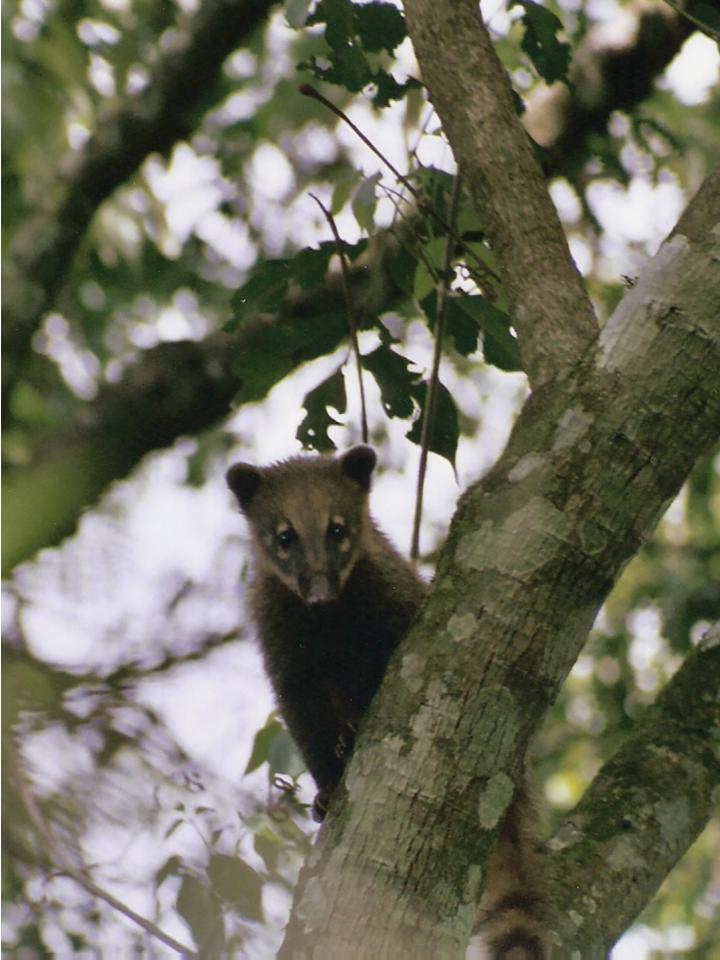
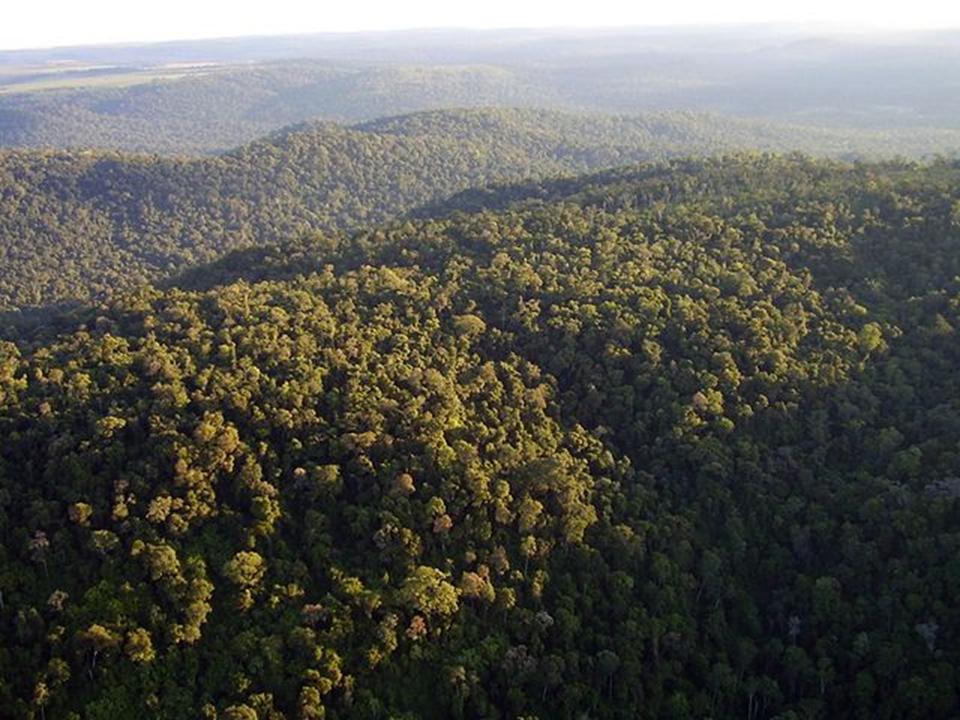
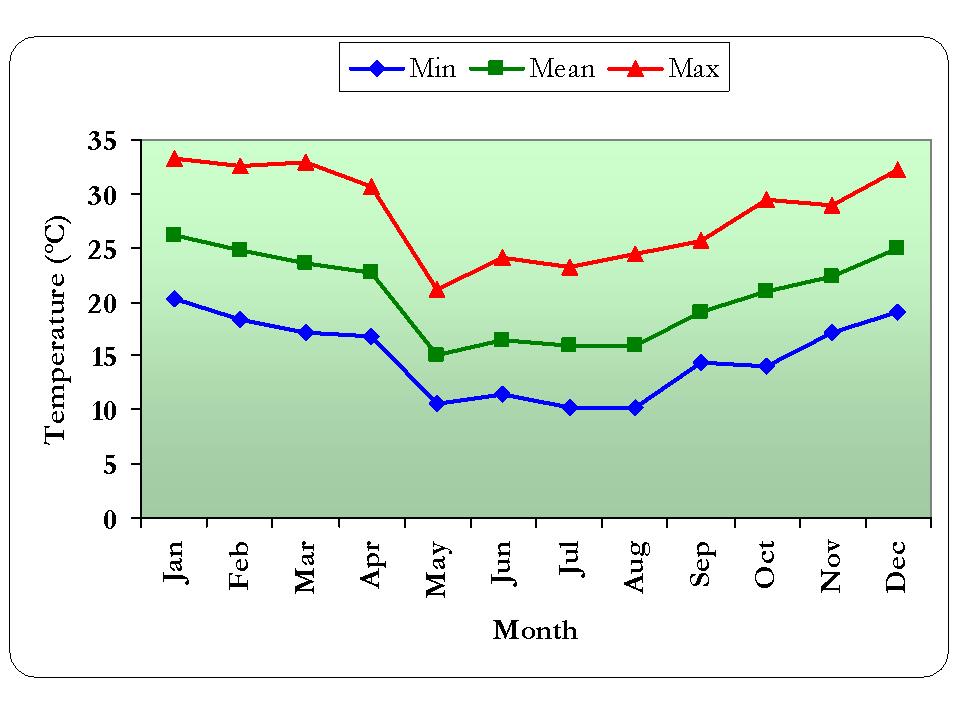
RAINFALL
Rain falls throughout the year with a yearly average of 2173mm (range 1305-3279mm). The wettest months are October through to February when frequent, sudden and dramatic electrical storms may be experienced. Reduction in forest cover in the region has affected the water cycle and many local agricultors now complain of "drought conditions" affecting their yields. Similarly a decline in the annual rainfall has also led to a "drying" of the forest, making it more susceptible to burning by natural and deliberate causes.
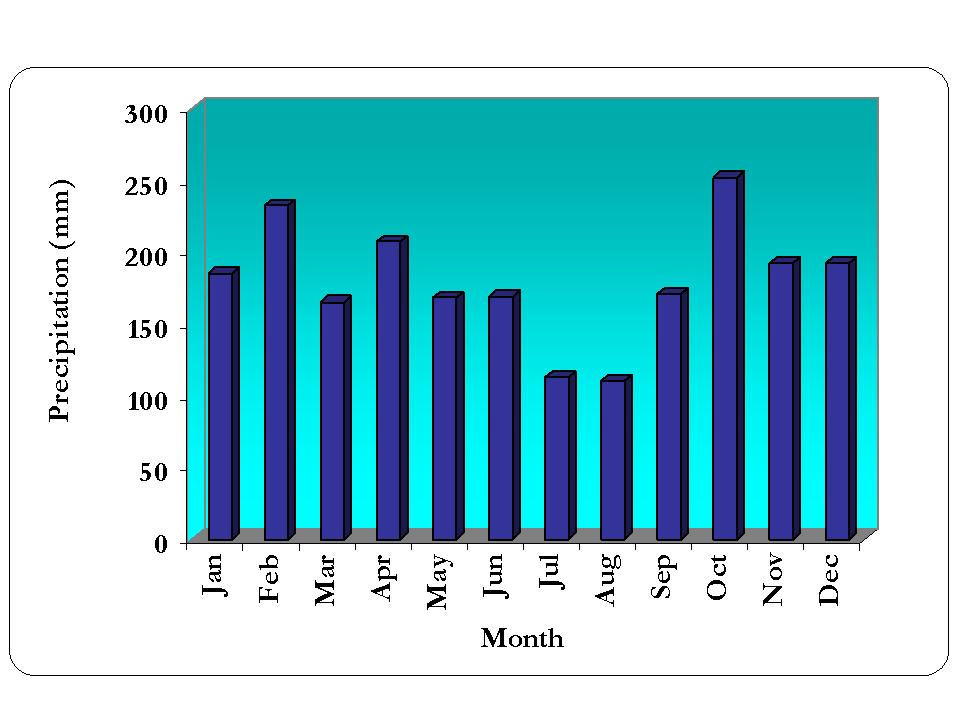
The graphs and data on this page are reproduced courtsey of Alberto Esquivel.
